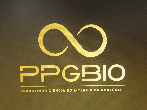Banca de DEFESA: KAMILA LIMA DE SOUZA
Uma banca de DEFESA de MESTRADO foi cadastrada pelo programa.DISCENTE : KAMILA LIMA DE SOUZA
DATA : 29/12/2020
HORA: 14:00
LOCAL: Ambiente virtual
TÍTULO:
Evaluation of the effect of photobiomodulation (660nm) and copaiba (Copaifera reticulata Ducke) oil on ointment in wound healing in rats (Rattus norvegicus albinus)
PALAVRAS-CHAVES:
Laser Therapy, Copaifera, Wound Healing, Skin
PÁGINAS: 79
GRANDE ÁREA: Ciências Biológicas
ÁREA: Biologia Geral
RESUMO:
Photobiomodulation by low intensity laser is one of the most used therapeutic resources in Physiotherapy because it promotes the acceleration of the tissue healing process. Another alternative therapeutic resource for use in the treatment of wounds is oleoresin from copaiba, a natural resource, described as anti-inflammatory, antifungal, antibacterial, analgesic and healing. Thus, this study sought to evaluate the effects generated by the association of photobiomodulation (660nm) and copaiba oil (Copaifera reticulata Ducke) in 10% ointment, in wound healing in rats (Rattus norvegicus albinus). In this research, the chemical characterization of oleoresin was initially carried out, which presented in its sample as major metabolites β-karyophylene (24.48%), β-bisabolene (23.49%) and methyl ester of kuranoic acid (9.93%). Then, the skin irritation/corrosion test was carried out on female rats, with oleoresin in naturaand in 10% ointment, which demonstrated in its natural form to be classified as a moderate irritant, but not corrosive, since the ointment did not present signs of skin irritation/corrosion. To assess wound healing, 42 Wistar rats were used, each animal with two wounds on its back, one upper and one lower, divided equally into two groups (G1 and G2). In G1, the upper wound being a control group (CG), treated with 0.9% saline, and the lower, a photobiomodulation group (GF), treated with a 4J/cm² laser, 660nm; in G2, the upper one, ointment group (GP) treated with copaiba in 10% ointment and the lower one, photobiomodulation and ointment group (GFP). All animals were submitted to daily treatment, after a period of 3 days, seven animals from each group, chosen at random, were euthanized, as well as, after 7 and 14 days of treatment. The macroscopic evaluation showed a significantly smaller (p <0.01) lesion area in the CG and GP compared to the GFP. Upon microscopic evaluation, all groups showed significant results in relation to the count of neutrophils, blood vessels, fibroblasts and total collagen, however, with better results in GP. Concluding in this way, that the ointment group obtained a better response when used in isolation, and the group of association of therapies was not able to more efficiently modulate the healing process.
MEMBROS DA BANCA:
Presidente - 1967452 - ADRIANA CAROPREZO MORINI
Externa ao Programa - 2160202 - ALANNA DO SOCORRO LIMA DA SILVA
Externa à Instituição - DALIANE FERREIRA MARINHO




